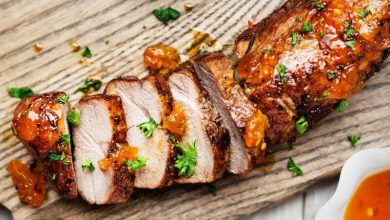🍬 Asian Sweet 🍬
Asian sweets are a delightful and diverse range of confections originating from the Asian continent. These sweets are known for their wide array of flavors, textures, and ingredients, making them popular treats enjoyed by people worldwide. Let’s dive into the history, components, preparation steps, and the time required to make some Asian sweets!
📜 History:
Asian sweets have a rich history that varies from region to region. They have been a part of Asian culinary traditions for centuries. Each Asian country has its unique heritage of sweet treats. Some well-known examples include Mochi from Japan, Gulab Jamun from India, and Mooncakes from China. These sweets often have cultural and religious significance, and their recipes have been passed down through generations.
🍬 Components:
The components of Asian sweets can vary greatly, but some common ingredients include:
- Rice Flour: Used in dishes like Mochi.
- Milk or Condensed Milk: For creamy sweets like Rasgulla.
- Flour: Used for making dough in various sweets.
- Sugar: A key sweetening agent.
- Nuts and Spices: Such as cardamom, saffron, or pistachios for flavor.
- Ghee or Oil: For frying or greasing.
👩🍳 Steps to Prepare Asian Sweets:
The preparation steps for Asian sweets can be intricate, but here’s a simplified overview:
- Gather Ingredients: Collect all the necessary components.
- Prepare the Dough: In many sweets, you’ll need to make a dough using flour, water, and other ingredients.
- Shape the Sweets: Depending on the specific sweet, shape the dough into balls, discs, or other desired forms.
- Cooking Method: Asian sweets can be steamed, boiled, fried, or baked, depending on the recipe.
- Sugar Syrup: Many sweets are soaked in sugar syrup for sweetness and flavor.
- Decorate: Garnish with nuts, spices, or edible silver/gold leaves.
- Allow to Cool: Let the sweets cool and absorb flavors.
⏱️ Time Required:
The time needed to prepare Asian sweets varies based on the complexity of the recipe. Some can be made in under an hour, while others may require several hours, especially if you’re making them for the first time. For example, a simple sweet like Coconut Ladoo might take around 30-45 minutes, while a more complex sweet like Gulab Jamun might take 1-2 hours.
Remember, mastering the art of making Asian sweets may take some practice, but the results are always worth the effort. Enjoy these delightful treats and share them with your loved ones! 🍡🍥🍰
🍬 Nutrition Facts and Health Information for Asian Sweets 🍬
Nutrition facts and health information for Asian sweets can vary widely based on the specific sweet, its ingredients, and preparation methods. Generally, Asian sweets tend to be delicious but can be high in sugar, fats, and calories. Here’s some general insight:
🔸 High in Sugar: Many Asian sweets are sweetened with sugar or sugar-based syrups. This can contribute to a high sugar content, which may not be suitable for those with diabetes or those looking to reduce their sugar intake.
🔸 Calories: The calorie content of Asian sweets varies, but many are calorie-dense due to ingredients like sugar, milk, and nuts. Portion control is essential if you’re mindful of your calorie intake.
🔸 Fats: Ghee or oil is commonly used in the preparation of Asian sweets, which can contribute to the fat content. While fats can add richness to the sweets, they should be consumed in moderation.
🔸 Proteins: Some Asian sweets contain small amounts of proteins, often from milk or dairy-based ingredients.
🔸 Carbohydrates: Carbohydrates, primarily from sugar and flour, are a significant component of Asian sweets.
🔸 Dietary Fiber: Asian sweets are typically low in dietary fiber, as they are not made with whole grains or fiber-rich ingredients.
🔸 Vitamins and Minerals: Depending on the ingredients used, Asian sweets may provide some vitamins and minerals, such as calcium from dairy products and small amounts of vitamins from nuts and spices.
🔸 Health Considerations: While Asian sweets are undoubtedly delicious, they are not typically considered health foods. Consuming them in moderation is advisable, especially if you are watching your sugar, fat, or calorie intake.
🔸 Portion Control: Enjoying small portions of Asian sweets can allow you to savor the flavors without overindulging in calories and sugar.
🔸 Homemade vs. Store-Bought: Preparing Asian sweets at home can give you more control over the ingredients and potentially make them slightly healthier by adjusting the sugar or fat content.
🔸 Balanced Diet: It’s essential to balance your diet with a variety of nutrient-rich foods to offset the occasional indulgence in sweets.
🚫 Allergens: Some Asian sweets contain nuts, dairy, or other common allergens, so individuals with allergies should be cautious.
Remember, moderation is key when enjoying Asian sweets. While they may not be the healthiest option, they can be a delightful treat when consumed in reasonable quantities and as part of a balanced diet.



